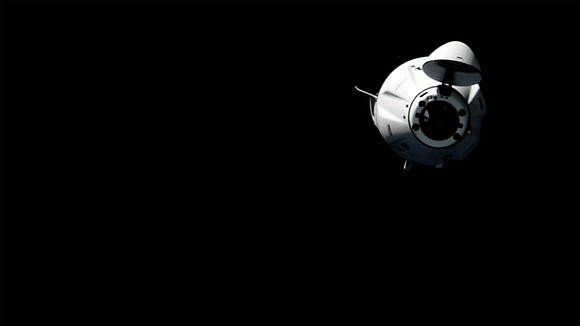SpaceX mission carrying former NASA astronaut, three paying customers departs space station
CNN/Stylemagazine.com Newswire | 5/30/2023, 10:16 a.m.

Originally Published: 30 MAY 23 11:07 ET
By Jackie Wattles, CNN
(CNN) — A SpaceX capsule carrying a decorated former NASA astronaut and three paying customers departed from the International Space Station at 11:05 a.m. ET on Tuesday, kicking off the final leg of a historic weeklong mission for the crew.
The Crew Dragon spacecraft is expected to splash down off Florida’s coast around 11:04 p.m. ET Tuesday.
After launching from Florida on May 21, the crew spent about 16 hours aboard the Crew Dragon capsule as it maneuvered toward the space station, which orbits about 250 miles (400 kilometers) above Earth.
Axiom Mission 2, or AX-2, was put together by the Houston-based company Axiom Space and marks the second all-private mission to the orbiting outpost, meaning commercial companies, rather than a government agency, have been overseeing its execution.
The mission was also a milestone in the history of spaceflight as stem cell researcher Rayyanah Barnawi became the first woman from Saudi Arabia to travel to space.
The AX-2 mission is one in a lineup of commercial missions designed to spur private sector participation in spaceflight — particularly in low-Earth orbit, where the International Space Station orbits.
Meet the AX-2 crew
Former NASA astronaut Peggy Whitson, 63, is leading the AX-2 crew. With this mission, Whitson, now an Axiom Space employee, also became the first woman to command a private spaceflight.
“I’m really excited about returning to space, but even more excited about welcoming three new astronauts,” Whitson said in a May 21 statement from the Crew Dragon spacecraft after launch.
One of the three paying customers joining Whitson is John Shoffner, an American who made his fortune in the international telecom business and founded the hardware company Dura-Line Corp.
Saudi Arabia also paid to fly two of its citizens: Barnawi and Ali AlQarni, a fighter pilot in the Royal Saudi Air Force.
“I am very honored and happy to be representing all the dreams and all the hopes of all the people in Saudi Arabia and all the women back home,” Barnawi told reporters at a May 16 news conference.
During the mission, Barnawi and AlQarni also engaged in outreach projects, including testing out a kite in microgravity and capturing video for viewers back home.
The AX-2 crew spent the past eight days working alongside the existing crew members aboard the space station, though they operated on different schedules. The crew worked through a lineup of more than 20 investigations and science projects — including stem cell and other biomedical research.
This mission marked Whitson’s first return to space since 2017. Her extensive prior experience on the station made her a US record holder in 2017 for the most cumulative days logged in space, and she ranks eighth on the all-time list, according to NASA.
Whitson has flown on a Russian Soyuz spacecraft as well as NASA’s space shuttle, but she said preparing for this mission was “obviously different” because it involved training to operate SpaceX’s Crew Dragon, which has only been flying astronauts since 2020.
“That’s been one of the biggest challenges for me is learning this particular spacecraft,” she said. “But I’ve really enjoyed it.”
Barnawi and AlQarni are only the second and third Saudi nationals to travel to space. The first was Prince Sultan bin Salman, who spent about a week on a NASA space shuttle mission in 1985.
Saudi Arabia has faced a barrage of criticism from the Biden administration and Congress over its human rights record, though the ties between the United States and Saudi Arabia remain strong.
AlQarni said in a news conference earlier in May that he believes Arabs’ participation in spaceflight is a “great opportunity” that can inspire the region.
The mission will “hold a big message. … We are holding hands, we are working together for the betterment of humanity and just trying to innovate,” he said during a mid-May news briefing.
The future of private spaceflight
This mission isn’t the first time individuals have paid their way to space. A company called Space Adventures brokered several such missions to the space station in the early 2000s, booking rides for wealthy thrill seekers on Russia’s Soyuz spacecraft.
Axiom brought that business model to the United States, partnering with SpaceX to establish a framework for getting an array of customers to the space station. The company’s first foray, Axiom Mission 1, or AX-1, launched in April 2022 and marked the first time private citizens traveled to the space station from US soil.
Axiom’s goal is to make these missions routine, offering more opportunities for people who are not professional astronauts to experience spaceflight. During a prelaunch news conference, Derek Hassmann, chief of mission integration and operations at Axiom Space, said his company expects to see more customers sponsored by governments, similar to the AX-2 passengers from Saudi Arabia.
“Government astronauts are indeed a key piece of our business plan,” he said. “Early in the program … it wasn’t clear to us what the balance would be between private individuals and government astronauts since nothing like this had ever been done before. But it’s become clear to us that the government … market is key, and we’re pursuing that actively.”
Axiom leadership envisions private spaceflight will continue even after the space station is retired, which NASA anticipates will happen in late 2030. Axiom is one of several US companies gunning to create a new, privately owned space station. It’s an effort supported by NASA, which aims to bolster private sector participation closer to home so the agency can focus on investing in deep-space exploration.



